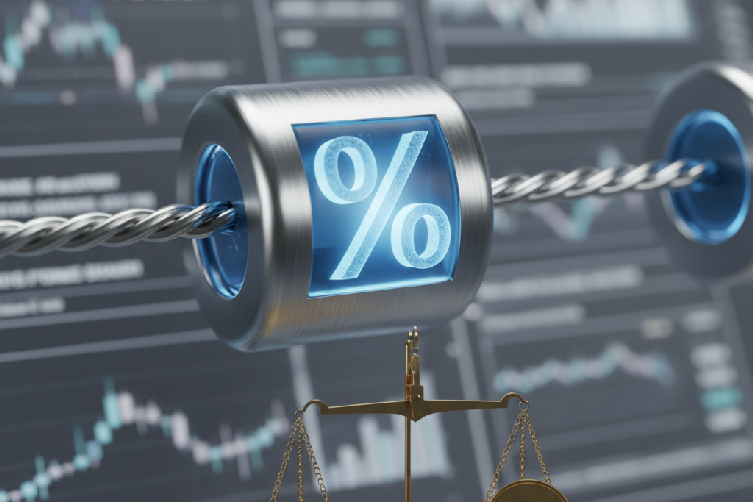What Is the 1% Rule in Forex Trading?

Forex trading is known for its high volatility—offering the potential for big returns but also carrying significant risk. To navigate this landscape, savvy traders rely on smart strategies, and one of the most crucial is the 1% rule.
This rule is a cornerstone of effective risk management. It helps you limit potential losses on any single trade, ensuring you can trade for the long haul. This guide will explore the 1% rule, its role in position sizing, its psychological benefits, and how to integrate it into your trading plan.
What is the 1% Risk Rule?
The 1% risk rule in forex trading is a simple but powerful guideline: never risk more than 1% of your total trading capital on a single trade. Its main purpose is to preserve your capital and shield you from a devastating series of losing trades.
By sticking to this rule, you ensure you stay in the market long enough to let your winning strategy pay off. It’s about longevity and protecting your account from being wiped out by a few bad decisions.
The History Behind the 1% Rule
Risk management in trading has evolved significantly over the years. The 1% rule became popular as professional traders and financial institutions developed more systematic ways to handle risk. Before such structured rules, traders often faced huge, crippling losses.
As a result, successful traders and top educators began to endorse the 1% rule. Today, it’s considered a fundamental part of any disciplined trading strategy.
Applying the 1% Rule to Position Sizing
Position sizing is how you decide the amount of capital to allocate to a trade, and the 1% rule is your guide. Here’s a simple, step-by-step process:
The formula is straightforward:
Position Size = (Risk Amount) / (Stop-Loss in Pips * Value per Pip)
For example, with a $10,000 account, your maximum risk per trade is $100. If you set a stop-loss of 50 pips and each pip is worth $1, your position size is calculated accordingly. This ensures you only risk a small, controlled fraction of your capital.

A Detailed Example of Position Sizing
Let’s walk through an example with a trader who has a $50,000 account:
- Trading Capital: $50,000
- Maximum Risk (1%): $500
- Planned Trade: Buy EUR/USD
- Stop-Loss: 100 pips
- Value per Pip: $10 (for a standard lot)
- Small Account ($5,000): Your 1% risk is $50. With a 20-pip stop-loss where each pip is $1, you can trade a position that respects this limit.
- Medium Account ($25,000): Your 1% risk is $250. With a 30-pip stop-loss where each pip is $10, you can calculate the appropriate standard lot size.
- Large Account ($100,000): Your 1% risk is $1,000. With a 50-pip stop-loss where each pip is $10, your position size adjusts to keep your risk in check.
- Scenario 1: Tight Stop-Loss (10 pips): With a tight stop, you can take a larger position size while still risking only $200.
- Scenario 2: Wide Stop-Loss (200 pips): A wider stop requires a much smaller position size to ensure the total risk remains at $200.
- Capital Preservation: It allows you to withstand a series of losses without draining your account.
- Stress Reduction: Knowing your maximum loss is small helps reduce emotional decision-making.
- Consistency: It enforces a disciplined and repeatable approach, which is vital for long-term success.
- Survivability: In a volatile market like forex, staying in the game is paramount. The 1% rule helps you survive downturns and trade another day.
Using the formula, the position size would be: $500 / (100 pips * $10/pip) = 0.5 standard lots. This calculation ensures that if the trade moves against the trader by 100 pips, the maximum loss is capped at $500.
Scenarios for Different Account Sizes
The rule adapts perfectly to any account size. Let’s look at a few examples:
Adjusting for Different Stop-Loss Levels
Your stop-loss distance also affects your position size. Consider a trader with a $20,000 account, where the 1% risk is $200.
By adjusting position size based on your stop-loss, you always stay within your 1% risk threshold, no matter your trade setup.
The Power of Risk Management and the 1% Rule
Risk management is the backbone of successful trading, and the 1% rule is a key pillar for several reasons:
The Critical Role of Stop-Loss Orders
Stop-loss orders are absolutely essential for implementing the 1% rule effectively. A stop-loss is a pre-set order that automatically closes your trade once it hits a specific price level.
Think of it as your safety net. It’s the mechanism that enforces your 1% risk limit without requiring you to manually watch every market move. By setting a stop-loss based on your risk calculation, you make your risk management plan automatic and unemotional, which is the key to consistent trading.